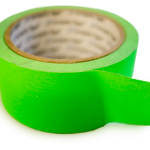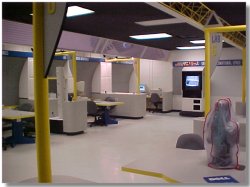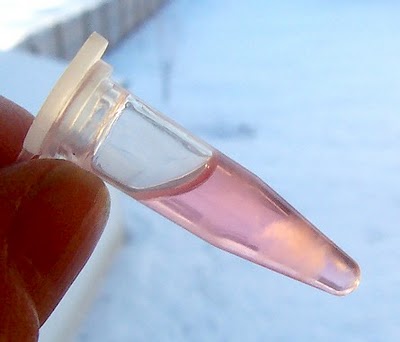Problem Solving Tools: Let’s Be Creative!

No matter what subject matter you are working on, problem solving and critical thinking are both important skills for everyone. Problem solving is woven throughout our daily lives as we engineer better methods of overcoming obstacles in our pursuit of better living conditions. Across the curriculum, educators can nurture strong product design skills in their […]
STEM Motivators: PBS Secret Life of Scientists and Engineers

Looking for a quick way to hook future STEM (Science Technology Engineering and Math) fans? PBS Secret Life of Scientists and Engineers are short, golden nuggets of insight into the life of modern day scientists and engineers. From biology to astronomy, to nanoscience and engineers, PBS inspires future innovators andnew discovery, showing the role models […]
STEM Video: Make a Lunar Crater Lab (NASA)

If you plan to use this hands-on lunar activity in your STEM Discovery classroom and you have video access, NASA’s demonstration is a perfect addition to get the exploration started.
Thanks to NASA JPL for their continued support for teachers and curious future scientists in the classroom!
Sunrise STEM Club: Reaching Minorities, Reaching The Stars

It’s the real video testimony from PBS featured Nanoscientist who recharge my excitement about the premier of our STEM club, kicking off in January. The sunrise schedule idea came about via a curious student and a conversation with a teacher who saw a dwindling crowd for the afternoon Physics club on campus. The after school crowd has football, basketball, or needs to be home to care for elementary age siblings.
STEM Student asks “Do I have to work in a team?”

Problem solving and team collaboration in the classroom are tough processes for some high performing students who just want to get the assignment done.
Given a choice, would you rather work alone or work in a team?
NPR looks at the science behind the team and how you can learn from the best.
Problem Based Learning: Putting It All Together with the Science of Photosynthesis

Problem Based Learning and STEM
As the state of our educational system changes in search of solutions to low Science, Technology, Engineering, and Math scores nationwide, teachers are in pursuit of learning strategies that meet the goal we’ve always had with our students (learning gains) with the statewide goals (student learning gains). Problem based learning is one of many methods in our teaching tool box we use to make this happen.
In a middle school science lab, how many students would you predict would get tongue tied when asked to describe photosynthesis? As a working example of learning gains in the classroom, the science concept of photosynthesis will take the stage as an example of how problem based discovery engages an unmotivated student.
DNA Science Featured with Mummies from The Past

I found myself among the dead on Friday. The science of mummies and the technology that unravels the mysteries are on display at the Charlotte, NC Discovery Place Mummies of the World Exhibit. Mummies of the World tells the story of the mummies through state-of-the-art multimedia, hands-on interactive stations and cutting-edge 3-D animation taking visitors on a 6,500-year journey to explore the mummies’ history and origins as well as how they were created through both intentional and natural processes. Through computer tomography (CT) scans, researchers have determined that prior to death many of the mummies showed evidence of various ailments and illnesses, some of them endemic among families.
Are You Still In The Pursuit of Science?

Did your science or math professor scare the curiosity right out of you? Girls and boys alike are curious by nature. Changing the social norm of hands-on for boys and dress up for girls means equal opportunities for all students to explore the world around us.
A colleague and I are building a new STEM club at our math, science, technology middle school magnet in Central Florida. We have looked at club successes from the past and we have analyzed the decline of some clubs, as well. Bringing together what works and weeding out a long term commitment, we hope will build the science muscles of these targeted learners.
I think “science in small doses” is a good place to begin.
Mapping out a series of units based on key science learning needs for our students on campus is complete. Now we begin our pursuit of the under resourced students mentioned in the NPR interview included in this post.~KayBorglum.com
Cell Phones for STEM: Technology as a Learning Tool in a Tight Economy

The Reality of Technology in Our Classrooms
Our students were born in a world with satellites and cell phone towers. But the policy in the school yard has that technology tool held hostage in their backpack or back pocket. I bet if I took a survey tomorrow morning, more of my students would have their cell phones in their backpack and less would have a pencil or pen. From the vista of my discovery lab classroom, I see cell phones as an immediate solution to a contagious interest in science and engineering for our students.~Kay Borglum (2011)
Changing Social Expectations in the Education Equation

As a STEM (science) teacher, I experience a more meaningful day with my learners from bell-to-bell when we blend real-world problems that enable them to safely problem-solve with meaning. Immediate feedback is generated through their daily learning journals in my Space Lab classes.
I promote high expectations and use instant revision to energize it. This past Friday, I invested 12 minutes towards how-to- improve the three lesson facts each student picks for their daily journal. “Don’t pick facts that you cannot connect to your life. That is boring. Boring is the opposite of discovery. Find facts that are hooked into what you do, what you want to do, and what thrills you. Then, your journal activity becomes something personal, something meaningful.” I saw an instant return on that 12 minute investment.~Kay Borglum, STEM Science Teacher (FL)
Engineering Your Classroom for Meaningful STEM Learning

Learning is a dynamic result of combining chunks of information and using that knowledge to create, describe, model, and connect to other ideas in future lessons. Reverse engineering in the classroom divides the lesson into steps on a path to meaningful learning and understanding for both the teacher and the student. Always begin with the end in mind.
NASA Office of Education : Summer of Innovation (SoI) STEM Mini-Grant Program

NASA Office of Education invites local schools and organizations to apply for grants that would enable existing summer & after-school programs to incorporate NASA-inspired science, technology, engineering and math (STEM) content and activities for middle-school (grades 5-8) students. Application deadline is June 17, 2011.
“I Wasn’t a Big Fan of Science, But Now I Am.”

Do you remember a hands on experience that sparked your inner science explorer?
